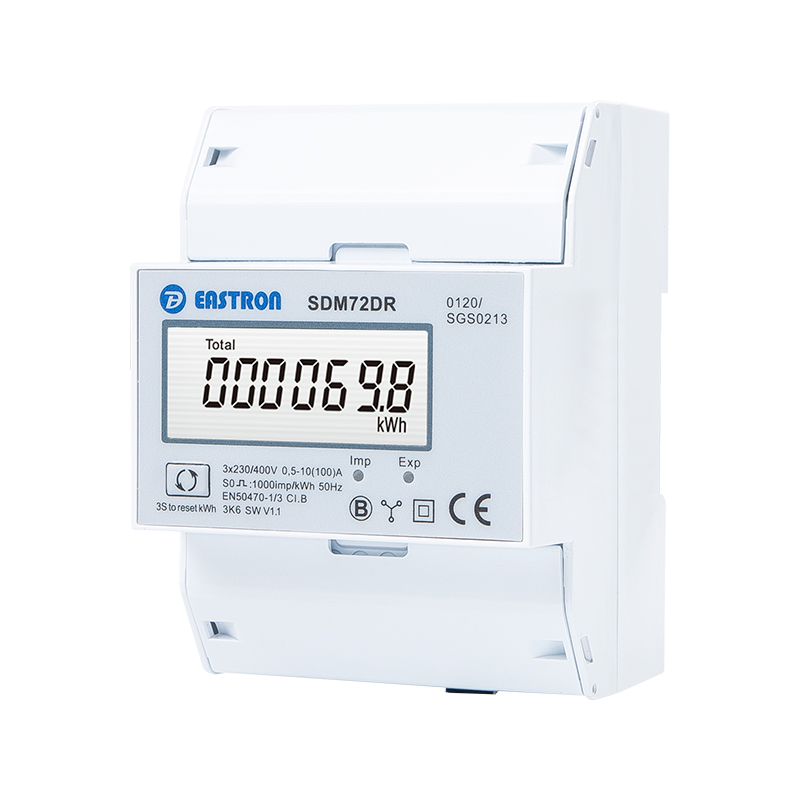Product Consultation
Your email address will not be published. Required fields are marked *

Eastron Smart Meters Secure LNE Certification: Strengthening DC Charging Solutions
May 21,2025
How Ethernet TCP and UL Certification Smart Meters Drive Efficiency in North America
May 15,2025
Advancing Precision in Residential Energy Monitoring: The Role and Evolution of Single Phase Electronic kWh Meters
May 14,2025Three-phase MID energy meters are designed to handle unbalanced loads by accurately measuring and recording the power consumed in each of the three phases independently, even if the loads on the phases are not equal. Unbalanced loads can occur due to various reasons, such as different types of equipment or machinery drawing uneven current from each phase. The ability to measure these imbalances is crucial for accurate energy billing, system diagnostics, and energy management. Here's how three-phase MID energy meters handle unbalanced loads:
1. Independent Measurement of Each Phase
How It Works: A three-phase MID energy meter measures the voltage and current on each phase independently. Even when the loads are unbalanced, the meter can accurately calculate the active and reactive power for each phase separately, which ensures accurate readings for each phase's energy consumption.
Impact: This ensures that even in the presence of an unbalanced load, the meter provides accurate data on power usage for each individual phase.
2. Calculation of Unbalanced Active and Reactive Power
How It Works: The meter calculates both active (real) and reactive power for each phase by monitoring the voltage and current waveforms in real-time. It uses the following:
Impact: This allows the meter to distinguish the contributions of each phase to the total consumption and accurately report on unbalanced power situations.
3. Monitoring of Power Factor for Each Phase
How It Works: Power factor is a measure of how efficiently the electrical power is being used. It is the ratio of active power to apparent power (which includes both active and reactive power). A power factor of less than 1 indicates that there is a significant amount of reactive power in the system. The meter continuously calculates the power factor for each phase and monitors phase imbalances.
Impact: This helps identify when one or more phases are underperforming or consuming more reactive power, which can indicate issues such as unbalanced loads.
4. Phase Imbalance Detection and Reporting
How It Works: High-quality three-phase MID energy meters often have the capability to detect phase imbalance, which occurs when one or two phases carry a significantly higher load than the third. These meters may feature algorithms that calculate the imbalance ratio (the difference in current between phases) and can flag this for the operator.
Impact: Phase imbalance can cause overloading of certain phases and lead to inefficiencies or equipment damage. Detecting and reporting imbalances early allows for proactive maintenance and energy management.

5. Data Logging and Alerts
How It Works: Many modern three-phase MID energy meters with communication capabilities (e.g., Modbus, M-Bus, or Wi-Fi) can log data over time and send alerts or warnings to users or operators when significant load imbalances are detected. These meters may provide detailed logs showing the historical imbalance, helping facilities diagnose problems with their electrical systems.
Impact: This allows users to quickly address load imbalances, reducing the risk of electrical failures and ensuring that energy consumption is accurately billed.
6. Load Balancing Suggestions
How It Works: Some energy meters, especially when integrated with energy management systems (EMS), can suggest or even implement load balancing techniques. These systems can analyze data from the energy meter and make recommendations to balance the load across the three phases more evenly, reducing the impact of unbalanced loads.
Impact: Optimizing load balancing can help reduce system losses, improve efficiency, and prevent overloading of equipment.
7. Phase-to-Phase Voltage Measurement
How It Works: In addition to current measurements, the three-phase MID energy meter also measures phase-to-phase voltage differences, which can vary in unbalanced load situations. These variations in voltage can lead to incorrect energy consumption measurements or potentially damage sensitive equipment. By monitoring these voltages, the meter can detect discrepancies and report them for further analysis.
Impact: Accurate voltage measurements ensure that the meter can account for any phase imbalance and adjust the calculations accordingly.
8. Compensation for Unbalanced Loads
How It Works: In some cases, three-phase MID energy meters can incorporate compensation algorithms to adjust for minor load imbalances. These algorithms make small corrections to ensure that the energy consumption data remains accurate, even when there is a slight imbalance.
Impact: This can reduce the need for corrective actions or system overhauls when minor imbalances occur, but larger imbalances will still be flagged for attention.
9. Compliance with Industry Standards
How It Works: Three-phase MID energy meters comply with international standards such as the IEC 62053-21 (for active energy meters) and the MID directive (Measuring Instruments Directive) in the EU, which ensure that the meters can measure accurately under unbalanced conditions.
Impact: By adhering to these standards, the energy meter ensures that readings are valid and reliable for billing and regulatory purposes, even in situations involving unbalanced loads.
Your email address will not be published. Required fields are marked *
We develop and produce high performance electricity meters, power analyzers, current sensors, communication modules and management systems. China Custom Smart Meters Manufacturers and Factory
Address: NO 52, Dongjin Road, Nanhu, Jiaxing, Zhejiang, China
Copyright @ Eastron Electronic Co., Ltd. All rights reserved Electricity Meters Manufacturers
